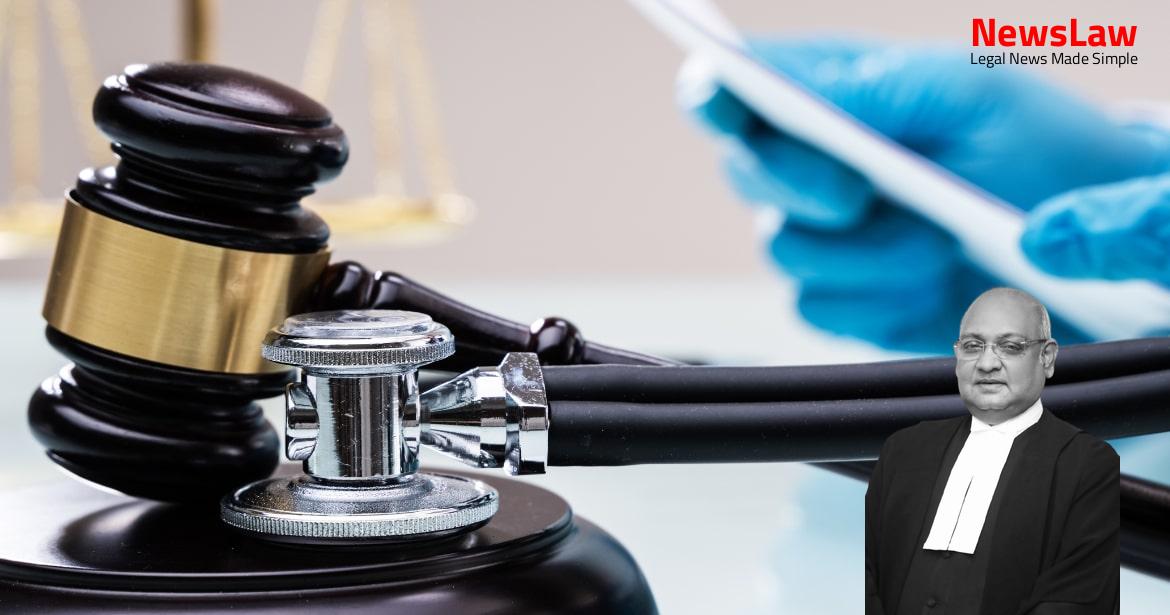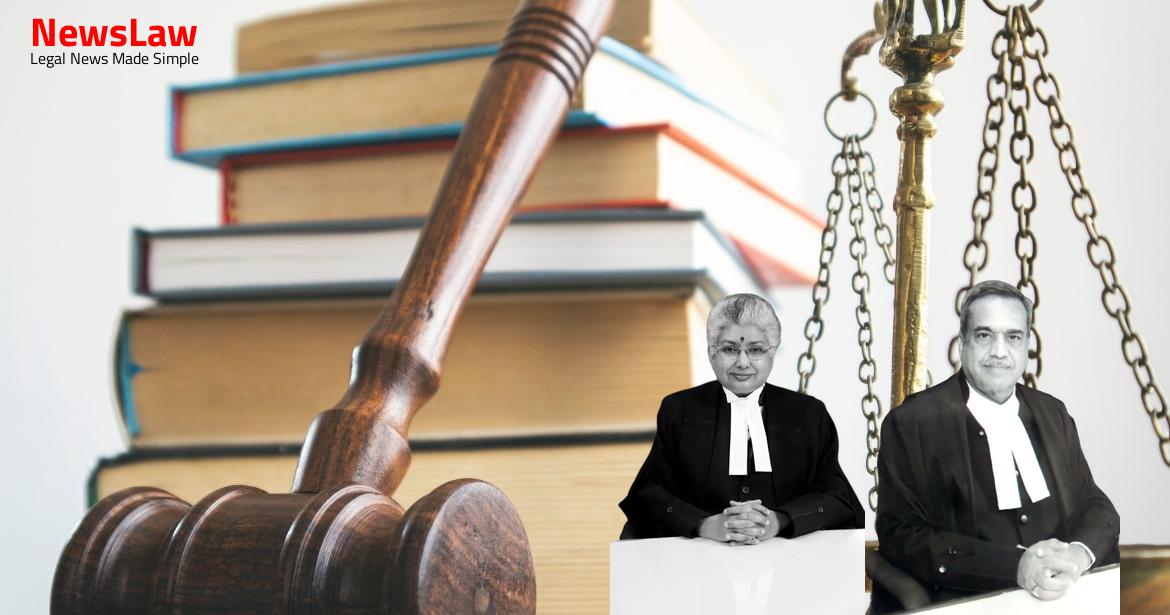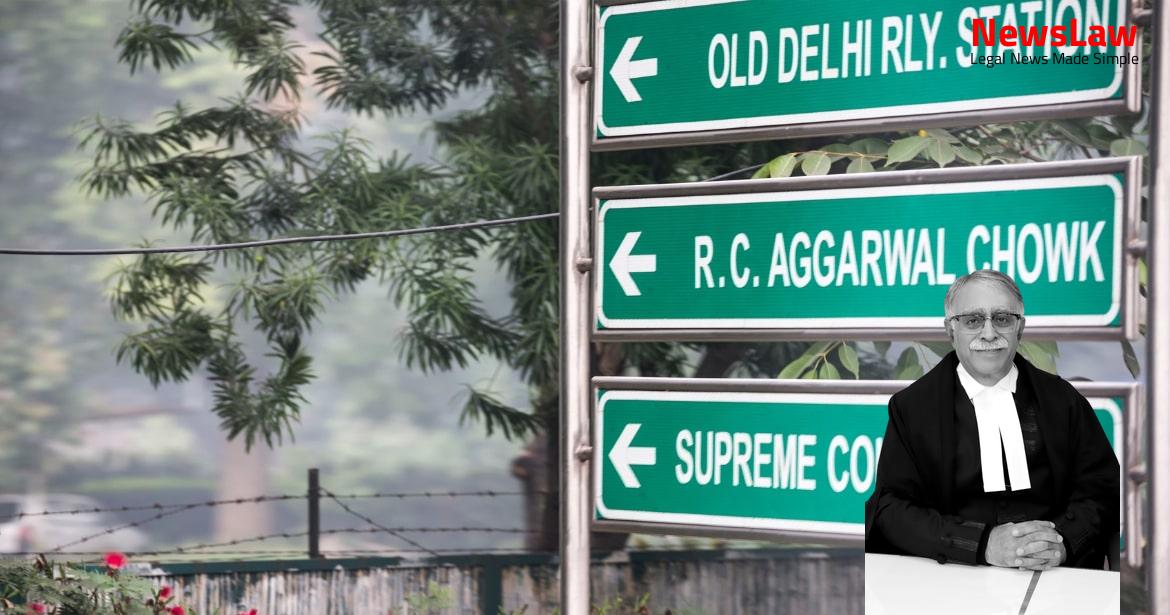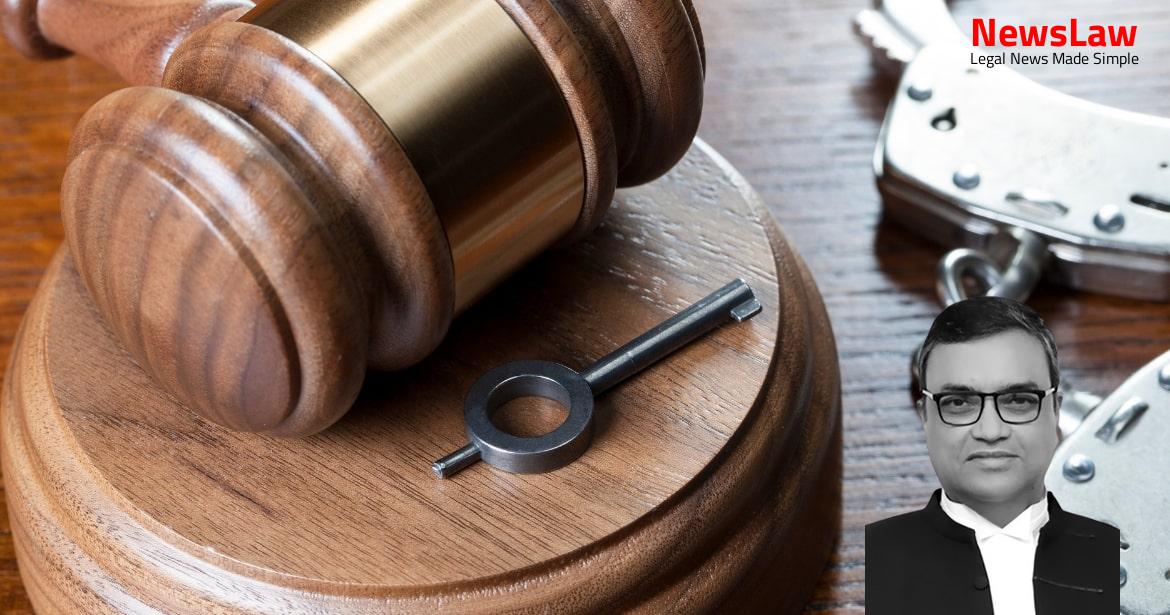In the case of State of Rajasthan v. Sheeshpal, the Supreme Court emphasized the crucial requirement of proving guilt beyond reasonable doubt. The judgment stands as a testament to upholding justice and fairness in legal proceedings, ensuring that the rights of all parties involved are protected. This summary showcases the key aspects of the case and the importance of thorough evidence in establishing accountability and determining outcomes.
Facts
- The Trial Court framed six points for determination:
- 1) Whether Govind Singh Netam has been murdered?
- 2) Whether attempt has been made to commit murder of Dhanwaram Netam?
- 3) Whether the accused persons have committed the said act by forming an unlawful assembly and committing riot and abetted the commission of aforesaid act in furtherance of common intention?
- 4) Whether accused persons had intention to commit murder of Govind Singh and Dhanwaram?
- 5) Whether accused persons are guilty of rioting being armed with deadly weapons?
- 6) If yes, then punishment.
- A group of about 17-18 accused persons came from the canal side and assaulted Govind Singh.
- Witnesses testified that during the assault, Govind Singh was dragged by holding his legs and beaten by the other accused persons.
- Various accused persons were named, such as Mangal, Gareeb, Chintaram, Bhanjan, Bharosa, Narad, Keshav, Lakshman, Khemraj, and Duleshwar.
Also Read: Analysis of Preferential Transactions and Financial Creditor Status
Arguments
- The appellants have challenged their conviction and sentence in the present appeals.
- The learned counsel argued that only two out of the alleged eye-witnesses named the accused, while the evidence against the other appellants was inconsistent.
- Counsel cited the case of State of Rajasthan v. Sheeshpal to emphasize that guilt must be proven beyond reasonable doubt.
- Alternatively, counsel suggested reducing the conviction of one appellant to Section 304 of IPC due to time served and acquitting the others.
- The State’s counsel supported the conviction, highlighting that multiple witnesses corroborated the details of the incident and the weapons used.
- Reference was made to the case of Chandra Shekhar Bind and Ors. v. State of Bihar to support the requirement of consistency in witness testimonies.
- The value of testimony from a hostile witness was also discussed citing the case of Paulmeli v. State of Tamil Nadu.
- Specific mention was made of a witness who identified two accused persons, further strengthening the case.
- Minor discrepancies in witness testimonies were argued to be expected and should not undermine the prosecution’s case.
- All accused appellants were identified by the eye-witnesses, particularly by a key witness named PW-5.
- In the case of Madan Singh v. State of Rajasthan (1978) 4 SCC 435, the recovery of blood-stained clothes and weapons from the accused was established by the Investigating Officer (PW-20), which further supports the appellants’ complicity in the case.
- Referring to Lalji v. State of UP (1989) 1 SCC 437, it was emphasized that the liability of every member of an unlawful assembly is upheld once it is proven that they committed the offense, without the necessity of proving individual roles or acts.
- Nand Kumar (A-12) was not named in the testimonies of eye-witnesses as indicated in the written submissions by the respondent State’s counsel.
Also Read: Fair Consideration for Promotion Criteria in Judicial Appointments
Analysis
- The Trial Court convicted 9 accused persons, including the present appellants, for the offences under Sections147, 148 and 302 read with Section 149 IPC and the High Court confirmed such conviction.
- The scenario concerning the incident reveals the existence of enmity between the parties and the assault on PW-1 Dhanwaram played a significant role in escalating tensions.
- The Trial Court meticulously analyzed the evidence, relying heavily on the testimony of PW-5 Prahlad Yadav in recording convictions.
- Seizure of blood-stained weapons and clothes by the Investigating Officer during the investigation supports the prosecution’s case.
- Despite minor discrepancies and hostile witnesses, the consistent account of the incident by multiple witnesses provides a strong basis for the convictions.
- Formation of an unlawful assembly proved, along with the use of force leading to rioting and subsequently, the death of Govind Singh.
- Detailed testimonies and corroborating evidence indicate the intention of the assailants to cause harm and resulting in the death of the deceased.
- The accused members gathered armed with weapons consistently appear to have participated in the assault on Govind Singh.
- Individual analysis of the appellants reveals their involvement in the assembly that thrashed Govind Singh to death, with specific witness testimonies and material evidence.
- Likelihood of causing death by the nature of actions of the assembly must be shown to be within the knowledge of the member to be held vicariously liable.
- Not every offense committed by a member of an unlawful assembly can be attributed to or vicariously imposed on every other member with the aid of Section 149 of the IPC.
- In cases involving multiple accused persons and several witnesses, the two-witness theory is a prudent exercise to ensure reliable identification of the accused as a participant in the rioting.
- The case of Masalti v. State of U.P. (1964) 8 SCR 133 mentioned the importance of trustworthy evidence given by multiple witnesses to sustain conviction.
- A mechanical test of having two or three consistent witnesses is often adopted in cases with a large number of offenders to confirm the identification of an accused.
- Even though the quality of evidence is crucial, the quantity of witnesses providing consistent testimony is also considered important.
- The testimony of a single witness, if wholly reliable, can be sufficient in establishing the identity of an accused as a member of an unlawful assembly.
- However, in cases where many individuals may have witnessed the incident, the consistency of more than one witness can help remove doubts about the identity of the accused.
- The prosecution failed to prove its case beyond reasonable doubt against the accused-appellants Khemuram (A-8) and Lakhan (A-13). Therefore, they deserve to be acquitted on benefit of doubt.
- The accused persons against whom the case of the prosecution is established beyond reasonable doubt are rightly convicted for offenses under Sections 147, 148, and 302/149.
- There is no reason to consider the present case as culpable homicide not amounting to murder.
- Accused-appellants Bharosaram (A-1), Duleshwar (A-2), Bhanjan Singh (A-5), Keshav Prasad (A-7), and Nand Kumar (A-12) have been rightly convicted with other co-accused persons for offenses under Section 147, 148, and 302/149.
Also Read: Analysis of Suspicious Circumstances in Probate Proceedings
Decision
- Criminal Appeal Nos. 1813 of 2017 and 1815 of 2017 are dismissed.
- Criminal Appeal No. 1814 of 2017 is allowed in part.
- Impugned judgments are set aside for accused-appellants Khemuram (A-8) and Lakhan (A-13).
- Accused-appellants Khemuram (A-8) and Lakhan (A-13) are to be set at liberty forthwith, if not required in any other case.
Case Title: DULESHWAR Vs. STATE OF MP (NOW CHHATTISGARH) (2020 INSC 61)
Case Number: Crl.A. No.-001813-001813 / 2017



